
Scotland is a country teeming with history, culture and friendly faces. Whether you're strolling along the historic streets of its capital, Edinburgh, or taking in its picturesque Highlands, you'll feel the unique character of a land that has stood the test of time. There's food that may take a while to get used to—Haggis, anyone? Whisky that's famous the world over and sights, smells, and sounds that can't be replicated anywhere else. Ladies and gentlemen, Welcome to Scotland!
Scotland is renowned as the land of lochs, castles, and distilleries and boasts world-famous attractions such as Edinburgh Castle, Loch Ness, and St Andrew's Golf Course. It's a country small enough to take in the must-see attractions on a short tour yet steeped in so much history and hidden gems as to warrant an extended stay. No matter how you decide to tour Scotland, you'll find a route full of adventure and charm.
Below is our list of the 20 essential attractions for your time in Scotland.
Edinburgh Castle, standing proudly over Scotland's capital for almost a millennium, serves as a powerful symbol of national pride and testament to the country's captivating history. Over the centuries, the castle grounds have played diverse roles, functioning as a royal residence, a prison, and a fortress. Impressively, the castle has weathered 26 sieges without ever being breached. Today, it stands as one of Britain's most cherished tourist destinations. During its time as a royal residence, Mary Queen of Scots gave birth to her son James VI in the royal palace. The grounds are also home to Edinburgh's oldest building, St. Margaret's Chapel, named in honour of Queen Margaret.
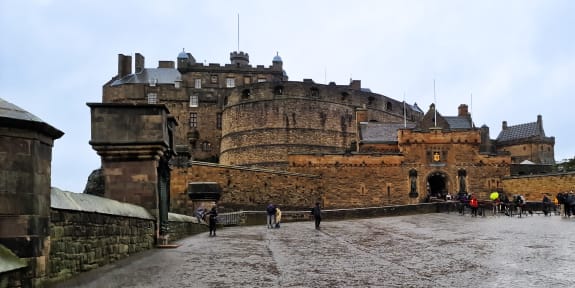
Approaching from the top of The Royal Mile, a road connecting Holyrood Palace to Edinburgh Castle, you enter the castle through the expansive courtyard known as the Esplanade. Built in 1753 as a platform for Edinburgh Military events, the Esplanade in more recent times plays host to The Royal Edinburgh Military Tattoo every August, featuring military music and marching performances. From here, pass through the castle gatehouse, guarded by statues of Scottish heroes Robert of Bruce and William Wallace (Braveheart).
Within the castle grounds, notable attractions include the Argyle Battery, one of the five cannon firing stations, the One O'Clock Gun (fired every day at 1pm, except on Sundays, Christmas Day and Good Friday, with a resounding cannon blast), as well as St. Margaret's Chapel, the Grand Hall, and the Scottish National War Memorial.
It is advisable to book your Edinburgh Castle tickets as far in advance as possible. This will ensure entry, as well as the best possible price. Once tickets are put on sale they tend to sell out quickly, this is especially true for visits during the peak summer months.
For those looking to take in all that Edinburgh Castle has to offer, at a leisurely pace, allocating approximately two hours would be ideal. While most of the castle grounds are flat and easy to get around, there are areas of cobblestone and steps, which may pose challenges for those with mobility issues. The Redcoat Café, located alongside the One O'Clock Gun has step-free access. A noteworthy consideration: the firing of the One O'Clock Gun makes a sudden and loud noise. If this is an issue for anyone in your group, there are ear defenders available via members of staff.
From the 1st of April to the 30th of September, Edinburgh Castle is open from 9.30am to 6pm — with the last entry at 5pm.
From the 1st of October to the 31st of March, Edinburgh Castle is open from 9.30am to 5pm — with the last entry at 4pm.
The opening times for the museums and other independent attractions on the grounds may vary. And, the castle is closed completely on the 25th and 26th of December.
Prices of a ticket to Edinburgh Castle range from £19.50 for an adult to £11.40 for a child. Entry for children under 7 is free, but a ticket is required.
Depending on how imaginative your mind is, Loch Ness is either a spectacularly large lake (the largest by volume in the British Isles), or the home of one of Earth's most mysterious and long-necked monsters, or both! What is undoubted is the natural beauty of the region and of the lake itself. Its most famous resident, The Loch Ness Monster or "Nessie", was first spotted (allegedly) by St Columba in 564. During the 20th Century, as tourism to the area boomed, partly because of Nessie, so too did the locals believe there was something in the water.

At 22 miles long and 230 meters deep, Loch Ness acts as a hub for the surrounding glens and villages. Fort Augustus, found at the southernmost point of Loch Ness, offers visitors one of the most picturesque viewing points of the lake. Home to just over 600 people, Fort Augustus comes alive with visitors during the summer months and is one of the main docking areas for touring boats.
At the northern end of Loch Ness, you'll find Inverness, a city on Scotland's northern coast, located a 20-minute drive away. One of the main attractions along the banks of Loch Ness is Urquhart Castle, on the lake's western edge. A 16th-century castle, left in ruin after the Jacobite rising, Urquhart Castle adds a haunting presence to the calm waters of the loch.
If you're looking to stay a few days in the Loch Ness area, then Fort Augustus is the ideal location to set up base. You'll find a variety of accommodation options, as well as multiple biking and hiking routes that give you easy access to the epic surroundings.
Found in the idyllic setting of the Scottish Highlands, and standing 1,164 feet above sea level, Dalwhinnie Distillery is said to be the highest distillery in Scotland. Located within the Cairngorms National Park, the distillery's white exterior stands in stark contrast to the rolling green hills and valleys that surround it. First built in 1897, the distillery is famous for its unique Highland Single Malt Whisky as well as its eye-catching roadside smokestack. The location for the distillery was chosen for its easy access to peat from the nearby bogs and steady stream of pure spring water.

Inside the distillery, the unmistakable smell of malted barley and the noise of copper stills linger in the air. On a guided tour, visitors are given a detailed breakdown of the whisky-making process, from the ingredients used to the time-honoured storage techniques, and everything in between. The highlight of any whisky distillery tour, for many, is the whisky tasting. And, at Dalwhinnie, it's no different. The tasting rooms give you the chance to relax and enjoy the fruits of the on-site craftmanship, while taking in the stunning scenery.
For those wishing to take a little piece of Dalwhinnie home, there's a quaint Visitor Centre and shop where you can pick up a bottle of your favourite tipple, as well as other whisky-related gifts.
Dalwhinnie Distillery, like all Scottish whisky distilleries, is an extremely popular attraction. Booking as far in advance as possible is highly recommended, especially during the summer months and when booking as part of a large group.
Situated approximately 1.5 hours south of Inverness via the A9, 2 hours north of Edinburgh along the A9, and 1 hour east of Fort William through the A86 and A82, Dalwhinnie offers a central hub for exploring other single malt distilleries. It is a short drive away from the towns of Aviemore (35 mins) and Pitlochry (40 mins).
From the 1st of March to the 31st of October, Dalwhinnie Distillery is open from 10.30am to 5.30pm.
From the 1st of November to the 28th of February, Dalwhinnie Distillery is open from 10.00am to 4pm.
Prices of a ticket to Dalwhinnie Distillery range from £17 for the Dalwhinnie Distillery Tour which lasts 45 minutes, to £65 for the Dalwhinnie Expressions Tour & Masterclass Experience which lasts 1 hour and 45 minutes.
First established in 1670 as a medicinal plant haven, the Royal Botanic Garden Edinburgh has evolved into a vibrant sanctuary for over 250,000 plants from across the globe. Located just one mile from the centre of Edinburgh City, the botanic garden stretches across 70 acres of stunning landscape. Lovingly known locally as "The Botanics", its highlights include the Alpine Houses, the Woodland Garden, the Chinese Hillside and the Scottish Native Plants Collection in the Heath Garden.

The Royal Botanic Garden Edinburgh is free to enter and is easily accessible to all. It is only closed on Christmas Day and New Year's Day. Each season gives the garden a new look, from the snowdrops and Chinese witch hazels of Spring, to the Himalayan blue poppies and yellow-pink Golden Jubilee roses of summer. The autumn ushers in carpets of vibrant pink Guernsey lilies, regal purple crocuses, and crimson flag lilies, while winter may bring a less colourful atmosphere it is contrasted with the burnt-orange branches of scarlet willow trees.
While the gardens can be very busy during weekends and bank holidays, especially when the sun's out, you'll always find a spot to relax and unwind. A rarity in many of today's modern cities.
The Eilean Donan Castle was first built during the 13th century, during the time of the Vikings first settling in North West Europe. For the majority of its early life, the castle was owned by the Clan Mackenzie alongside their trusted allies the Clan MacRae. As the threat of Viking invasion lessened, so too did the size of the castle. Since it was first established, Eilean Donan Castle has been built and rebuilt four times. In 1719, as part of the British Jacobite rising the castle was destroyed following its invasion by government troops. For the following 200 years, the castle stood in ruins. Lt Colonel John Macrae-Gilstrap bought Eilean Donan Castle, and dedicated the following 20 years of his life to its restoration.
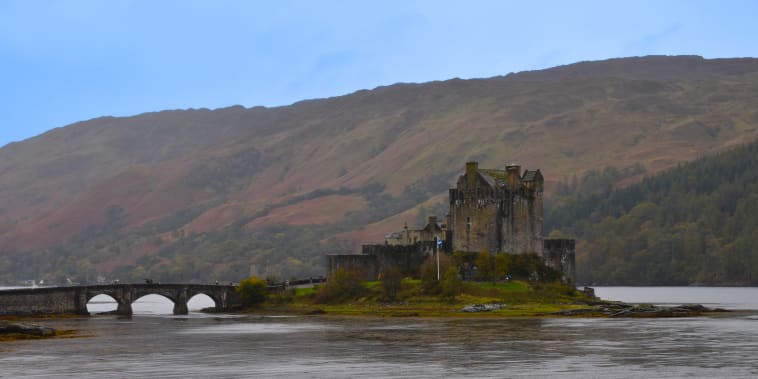
Today, although the castle is officially run by the Conchra Charitable Trust, the castle is still owned by John Macrae-Gilstrap and his descendants. As soon as you see Eilean Donan Castle in person, you'll know why it's classed as Scotland's Most Photographed Castle. The castle sits proudly on a small island on pristine waters, and is accessible via a narrow stone bridge from the mainland. Please note, that this bridge as well as parts of the castle interior can be challenging for those with mobility issues.
Inside the castle, visitors are treated to a variety of rooms, objects and hidden passages — some of which are only accessible at quieter times of the year. Children are especially catered for with interactive puzzles and games along the way. Keep an eye out for the 3 fake mice hiding in the staged kitchen! A full tour usually takes about an hour, and there is a coffee shop in the visitor centre for cakes and refreshments at the end.
Accessing Eilean Donan Castle can pose significant challenges, even for individuals with no mobility issues. Designated as a "Scheduled Monument" by the Scottish Government, the castle is subject to strict regulations that prohibit alterations to its infrastructure, such as the installation of elevators or handrails. Unfortunately, these restrictions render the castle inaccessible to individuals using wheelchairs or walkers. However, the visitor centre remains easily accessible to everyone.
Even though it's known as Scotland's Most Photographed Castle, photos inside Eilean Donan Castle are prohibited. Exterior photos, on the other hand, are encouraged. And, it's hard to take a bad one, thanks to the epic setting! The castle is located nearby to the Scottish Highland fishing village, which is equally photogenic and worth a visit. Eilean Donan Castle is quite a distance from the cities of Edinburgh and Glasgow, so would fit in better with a tour of the Highlands, rather than a day trip from the city.
From the 26th of March to the 28th of October, Eilean Donan Castle is open from 9.30am to 5pm — with the last entry at 4pm.
From the 29th of October to the 25th of March, Eilean Donan Castle is open from 10am to 4pm — with the last entry at 3pm.
Prices of a ticket to Eilean Donan Castle range from £11.00 for an adult to £6.50 for a child over 5. Entry for children under 5 is free.
Rosslyn Chapel was originally founded in 1484 by Sir William St Clair. Since then the chapel has endured a somewhat tumultuous existence. Having fallen into disrepair during the Reformation, the movement of the 16th century to reform the Roman Catholic Church, it was then attacked by Cromwell's troops in 1650 and used as a stable for their horses. Weekly services did not resume in the chapel until 1862, during a time of Victorian restoration. Further restoration during the 1950s ended in disaster when it was found that the cement used had reacted with the humidity of the chapel and destroyed some of the ancient stonework. In 1995, in order to restore and preserve the chapel, a major conservation project was undertaken.

Accessed via its modern visitor centre, Rosslyn Chapel stands today in all its former glory. A small but striking structure that seamlessly blends both Gothic and Renaissance architecture. Set within immaculately kept gardens, the detail on the exterior of the building is fascinating in detail, although some of the features have been worn over the years from weather and can be hard to distinguish.
Inside the chapel, you'll uncover tales of the Knights Templar and the Holy Grail, both from the symbolic carvings on the walls and ceiling and through informative talks from the staff. The chapel's connection with the Knights Templar and the Holy Grail, as well as the fact that there is a sealed vault beneath the chapel, have inspired countless conspiracy theories throughout the centuries. In his 2003 novel The Da Vinci Code, Dan Brown sets the final scene within Rosslyn Chapel, a location where, the book's protagonist, Robert Langdon claims the Holy Grail once was, but has since vanished.
The majority of the information is given by a staff member as a presentation inside the chapel. For those that are hard of hearing, it is advisable to sit as close to the staff member as possible as it can be hard to detect the further back you sit.
Rosslyn Chapel is located a 30-minute drive from the city of Edinburgh city. While the visitor centre and grounds are easily accessible by all, part of the chapel's interior and crammed and narrow. The is a steep stairwell leading into the chapel crypt, and is not accessible to those with mobility issues.
Rosslyn Chapel is open daily. It operates via a timeslot system. You can arrive at any time during your pre-booked timeslot. From Monday to Saturday, these timeslots are:
And, on Sunday, these timeslots are:
The price of a ticket into Rosslyn Chapel is £9.50 for an adult. Children aged 17 or under in a family group are free.
Jedburgh Abbey was first built in the 12th century by David I as a priory for Augustinian monks. Located just 10 miles north of the English border, David I used the abbey to show the English that Scotland could too construct awe-inspiring structures. Unfortunately, because of its borderland location, the abbey suffered numerous destructive sieges, especially during the Wars of Independence (1296–1356). Later, in the 15th and 16th centuries, the abbey and the surrounding town of Jedburgh came under further bombardment, as the English army fought Franco-Scottish forces for control of the area.

During the Scottish Reformation of 1560, the abbey was left to fall into disrepair, and its remaining monks fled for the safety of Yorkshire. Today, although the abbey stands in ruin, it is a spectacular sight. You'll see Romanesque and early Gothic architecture throughout, and the surrounding manicured gardens give the abbey an inviting atmosphere. Jedburgh Abbey is currently managed by Historic Scotland and there is a visitor centre and a shop on the grounds.
There convenient car park close to Jedburgh Abbey. This is a great spot for wide-angle photographs of the abbey, as well as for refuelling with a coffee and a bun in the nearby café!
Please note: As of summer 2023, Jedburgh Abbey is closed due to storm damage until further notice. But, you can access the grounds, surrounding herb garden, visitor centre and shop.
From the 1st of April to the 30th of September, Jedburgh Abbey is open from 9.30am to 5.30pm — with the last entry at 5pm.
From the 1st of October to the 31st of March, Jedburgh Abbey is open from 10am to 4pm — with the last entry at 3.30pm.
Jedburgh Abbey is closed on December 25th and 26th, and on January 1st and 2nd.
Prices of a ticket to Jedburgh Abbey range from £7.50 for an adult to £4.50 for a child.
Although it lacks any traditional attraction of its own, Portree more than makes up for it with its atmosphere and charm. The capital town of The Isle Of Skye, located in the far northeast of Scotland, Portree is a harbourside haven. Most known for its string of colourful houses overlooking the sheltered bay, the town is a hub for the outdoor activities available in the surrounding Trotternish Peninsula, and the rest of The Isle Of Skye. During the summer months, Portree's 2,300 residents are joined by huge amounts of tourists looking to explore the great outdoors.

The famed colourful house line Portree Harbour, and this is a good starting point for a walk through the town. If the mood takes you, there's a delightful fish and chip shop nearby at Quay Brae, where you can get a takeaway parcel for your adventure. There are numerous routes to take from here, one we would recommend — especially for photography enthusiasts — is an area known as The Lump. This is a short but relatively steep climb that takes you to the best spot on the island for panoramic shots of the surrounding scenery.
The famed colourful house line Portree Harbour, and this is a good starting point for a walk through the town. If the mood takes you, there's a delightful fish and chip shop nearby at Quay Brae, where you can get a takeaway parcel for your adventure. There are numerous routes to take from here, one we would recommend — especially for photography enthusiasts — is an area known as The Lump. This is a short but relatively steep climb that takes you to the best spot on the island for panoramic shots of the surrounding scenery.
The most popular restaurant in Portree is the upscale Scorrybreac. Busy all year round, and not helped by the fact that it only seats 20 people, in total, at any one time — booking far in advance is vital.
Overseeing a strategic junction, linking the Lowlands to the Highlands, has ensured that there has been a fortress of one kind or another in this location since prehistoric times. The area surrounding Stirling Castle has witnessed two of Scotland's most important battles. The first was William Wallace's victory over the English army in 1297 at Stirling Bridge. And, the other, which saw Scotland mark its nationhood, was Robert the Bruce's triumph at Bannockburn in 1314.
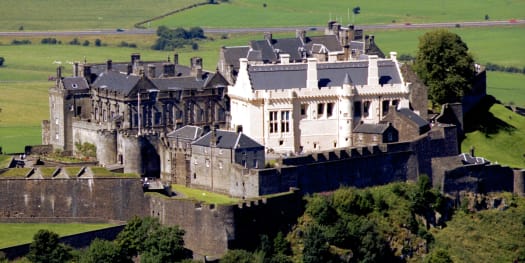
Atop Stirling Castle, you can see why it has played such a crucial role in Scottish history. Views extend to the rising Highland to the north and the River Forth below — the main route taken by invading troops as they made their way into Scotland's heartland. For a detailed lesson on the castle and its past inhabitants, which include Mary, Queen of Scots, and numerous Jameses (from whom the term "Jacobites" was created), you can head for the Castle Exhibition.
From the defensive boundaries of the castle, you'll be able to take in the stunning Forth Valley in all its glory. From here, you can tour the Great Kitchens, the main courtyard and the Royal Chapel. At the Royal Palace, you can view the famous hand-woven Stirling Tapestries, depicting the unique atmosphere of Scotland's royal court in the 1500s.
While Stirling Castle tends to be busy throughout the summer months, crowds lessen from about 4pm onwards. If you can plan your day's itinerary to arrive at the castle around this time, there's a good chance you'll have it all to yourself.
Each room in the castle has a staff member waiting to fill you in on the details, and answer any questions you may have. The nearby town of Stirling doesn't offer much in the way of excitement, but its quaint streets and picturesque Victorian homes are worth a look if you have the time.
From the 1st of April to the 30th of September, Stirling Castle is open from 9.30am to 6pm — with the last entry at 5pm.
From the 1st of October to the 31st of March, Stirling Castle is open from 9.30am to 5pm — with the last entry at 4pm.
The opening times for the museums and other independent attractions on the grounds may vary. The Regimental Museum closes 45 minutes before the castle. And, Stirling Castle is closed completely on the 25th and 26th of December.
Prices of a ticket to Stirling Castle range from £17.50 (online price) to £19.50 (walk-up price) for an adult to £10.50 (online price) to £11.70 (walk-up price) for a child.
What took shape from a violent natural occurrence, the rising of three volcanoes more than 350 million years ago, has become one of the UK's most celebrated and iconic cities. One of these volcanoes, today known as Castle Rock, is the home of Edinburgh Castle. The second is known as Carlton Hill and sits to the east of Edinburgh's New Town. And, the third, Arthur's Seat, which overlooks Holyrood Park is an ideal location for those looking to reconnect with nature. For the best part of 1,000 years, Edinburgh was essentially located between these three rocks, until New Town was developed and the city began to sprawl out in all directions. The main reason that the New Town of Edinburgh was developed was due to the overcrowding and sanitary issues of the Old Town during the 18th century. In fear that the city's wealthier residents would make the decision to flee to London, the local government of the day started work on building New Town.

Today, both Old Town and New Town are equally attractive places to live and visit, but it's Old Town that still holds favour for visitors to the city. And, it's clear to see why. Old Town is home to quaint narrow streets, historic landmarks like Edinburgh Castle, and a unique charm. Especially during the month of August, when Old Town hosts the renowned Edinburgh Fringe Festival, the world's largest arts festival.
New Town also has its charm, with the stunning architecture of the West End and an array of tree-lined parks and squares. It's here that you'll also find the city's more upscale restaurants and swankier bars. Overall, Edinburgh combines both charm and history seamlessly. And, regardless of the season, you can expect a warm welcome and a wealth of entertainment.
If see more of Edinburgh on foot, take a look at our Edinburgh City Walking Tour page.
For those visiting Edinburgh in August, you have the opportunity to revel in the Edinburgh Fringe Festival, renowned as the world's largest arts festival. The atmosphere in the city during this period is fantastic, but keep in mind that bars, restaurants, public transport, and streets tend to be a lot busier than usual.
The Palace of Holyroodhouse is the official residence of the British Monarch in Scotland. Nestled in Edinburgh's iconic Arthur's Seat area, the palace bookends The Royal Mile along with Edinburgh Castle. Once the home of Mary, Queen of Scots, today the palace hosts engagements for the British royal family. During her reign, Queen Elizabeth II held over 50 parties in the palace's gardens. In July 2023, King Charles III was presented with Scottish Crown Jewels at a ceremony in the palace.
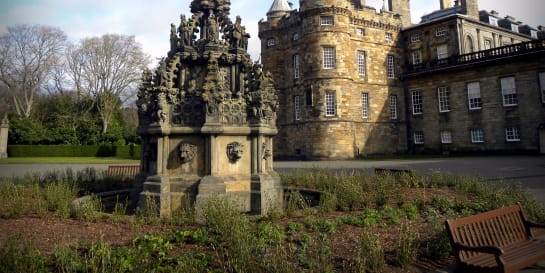
A tour through the palace takes you on a journey through time, and through the changing tastes and fashions of successive monarchs. From the bedchamber of Mary, Queen of Scots, to the Throne Room featuring a pair of thrones commissioned by King George V. Perhaps the most impressive room of all is the King's Bedchamber. Featuring a collection of French and Flemish tapestries draping its walls.
At any time of the year, the palace gardens, are a glorious sight. But, it really comes to life during the spring and summer months, when the colours of the flowers and chorus of songbirds are at their most vibrant.
As eating and drinking is not allowed within the palace, it's a good idea to sort all your refreshment needs at the courtyard café beforehand. The tour itself can take upwards of 2 hours.
Photography or filming inside the Palace of Holyroodhouse is not permitted. Eating and drinking are also not permitted within the castle, with the exception of bottled water. The audio guide during your tour is available in ten languages and there is an audio-descriptive tour available in English for partially-sighted and blind visitors.
From the 1st of April to the 30th of September, the Palace of Holyroodhouse is open from 9.30am to 6pm — with the last entry at 5pm.
From the 1st of October to the 31st of March, the Palace of Holyroodhouse is open from 9.30am to 5pm — with the last entry at 4pm.
Prices of a ticket to the Palace of Holyroodhouse range from £18.00 for an adult to £10.00 for a child.
Loch Lomond & The Trossachs National Park is woven together like a Scottish Highlands best-of. Featuring pristine lakes, meandering mountain paths, lush glens, and spectacular woodlands, it's where many a Scot fell in love with the outdoors. Having first been designated as a national park in 2002, the area is now one of Scotland's most popular tourist attractions, and first on the list for many people's tour of Britain. Here, it's all about preservation and responsible travel. The national park, and its wildlife inhabitants, are meticulously protected to ensure the same enjoyment can be taken from the area for generations to come.

Near to the Trossachs National Park, you'll find a number of sleepy villages, as well as historic pubs and restaurants. Loch Lomond itself lies at the southern entrance to the park, and is the largest lake in Great Britain by surface area (27.5 square miles), and the second only to Loch Ness by water volume. It forces the cliché "it has to be seen to be believed", as no photo can truly do it justice. If the mood takes you, and the weather isn't too cold, it's a dream location for canoeing, paddle boarding and wakeboarding. To explore the lake, and remain dry, there is also the option of taking a Loch Lomond Cruise, which typically takes 90 minutes.
If you plan to visit Loch Lomond & The Trossachs National Park and stay overnight, the nearby villages of Tarbet, on Loch Lomond, or Arrochar, on Loch Long, make for the ideal base.
First launched in Scotland in 1953 and officially retired in 1997, this regal yacht was a favourite of Queen Elizabeth II. So much so that it is said that she shed a tear during its decommissioning ceremony. Today, the moored yacht stands as Leith's most well-known attraction and consistently ranks among Scotland's top places to visit.

The yacht is accessed via a walkway from the Ocean Terminal shopping centre, which features photographs and exhibits detailing the history of the vessel. A self-guided audio tour allows guests on board to explore all five levels of the yacht. Every inch of the ship, from the lower-deck engine room to the impeccably appointed 1950s royal apartments and the captain's bridge, has been preserved to a meticulous level of detail and care.
The British Royal family have welcomed such guests as Grace Kelly, Sir Winston Churchill and Nelson Mandela onboard the yacht during its time at sea. In August 1981, the yacht took Prince Charles and Princess Diana to the Mediterranean, for their honeymoon. You can in conclude your tour with a regal treat at the Royal Deck Tea Room. Gaze across the waters, as you indulge in freshly-baked scones and traditional British tea.
The tour of Royal Yacht Britannia can take between 1 and 2 hours. It is best enjoyed as part of a small group, or on your own. You are free to wander where you like and the audio guide will take you through the history and functionality of each section.
Royal Yacht Britannia is located just 3 miles from Edinburgh City Centre. Alongside the ship, The Ocean Terminal shopping centre has over 80 shops, 6 restaurants, as well as a number of bars and cafés.
From January through March, Royal Yacht Britannia is open from 10am to 5pm — with the last entry at 3pm.
From April through August, Royal Yacht Britannia is open from 9.30am to 6pm — with the last entry at 4pm.
From September through October, Royal Yacht Britannia is open from 10am to 5.30pm — with the last entry at 3.30pm.
From November through December, Royal Yacht Britannia is open from 10am to 5.00pm — with the last entry at 3pm.
Prices of a ticket to Royal Yacht Britannia range from £18.50 for an adult to £9.25 for a child. Entry for children under 5 is free.
The small town of St Andrews lies on Scotland's east coast. Despite its modest size, it had a significant impact on Scotland's religious and educational development. First established as a religious hub, and then as a university town, the oldest of its kind in Scotland. Although the is physically small, it is worth spending a day walking through its West Sands beach, grand university buildings and medieval ruins.

Today, the area is known for its association with golf. The sport's most famous links, the Old Course runs dramatically along St Andrews' western edge. With a golfing heritage dating back to the 15th century, it is said to be the oldest course in the world, and is lovingly known as The Home of Golf. Famously, in 1457 visits to the golf course were becoming so popular that James II had to issue a ban to his troops, as it was impeding his troops' archery practice.
The British Open has been hosted in St Andrews a record 30 times, with the first taking place in 1873. The course is notoriously difficult to master for golfers of all levels. And, despite its grand standing in the world of golf, it remains a public course, open to all. Booking a tee time, however, is as notoriously difficult as playing the course itself — applications to play must be made at least a year in advance. There are guided walks available though, and you are also free to wander around the course, or take a stroll along its footpaths leading along its other edges.
Wrap up well, at all times of the year! This is the Scottish eastern coast at its most rugged and most exposed! If you think you've taken too many layers, bring another — your toes will thank you on the way out.
Glasgow Cathedral is a Scottish rarity, a cathedral left largely intact after the Scottish Reformation of the 1560s. First developed in the 13th century, and using the Gothic architecture of the time, it is dedicated to Glasgow's patron saint, St Mungo — who founded a monastic settlement on the grounds in the 6th century. Today, the interior of the cathedral is a mix of the old and the contemporary. Much of the impressive wooden ceiling boasts timber dating back to the 14th century, while the majority of the stained-glass windows, and items such as Francis Spear's 1958 masterpiece "The Creation" are relatively new additions.

A 15th-century stone choir screen divides the cathedral, adorned with seven pairs of statues that are said to represent the Seven Deadly Sins. Found in the northeastern corner is the entrance to the 15th-century upper chapter house, where the University of Glasgow was first established and today acts as a sacristy. A staircase descends into the lower church, where you'll find the tomb of St Mungo, held within a forest of stone pillars.
On the grounds of Glasgow Cathedral lies the Necropolis Victorian Garden Cemetery, thought to have been the site of up to 50,000 burials and home to over 3,500 tombs. The garden cemetery covers an impressive 37-acres, and is laid out more like an informal park, as favoured during Victorian times, rather than the more modern grid style.
Even though entry to Glasgow Cathedral is free, it is a good idea to book tickets online in advance of arrival to ensure a place.
Feel free to chat with the knowledgeable guides located throughout the cathedral; they are eager to answer questions, and can point out details that may otherwise be missed. While there are no toilets on the cathedral, there are some which are free to use in St Mungo's Museum — a one-minute walk away.
Glasgow Cathedral is daily open from 10am to 4pm (and 1pm to 4pm on Sundays)
Glasgow Cathedral is free to enter.
Having once stood as one of Britain's most influential industrial powerhouses, Glasgow City is today a thriving cultural hub. The formation of Glasgow Cathedral in the 12th century and the founding of the University of Glasgow in 1451, one of the English-speaking world's oldest universities, saw Glasgow grow to become a religious, intellectual and cultural hotspot on the Scottish map. Located in the west-central lowlands of Scotland, and with its proximity to the River Clyde, Glasgow went on to become a thriving industrial centre during the 18th and 19th centuries. Although the city suffered an economic downturn during the 20th century, in recent years it is enjoying an economic and cultural renaissance.

While Glasgow isn't as pleasing to the eye as some of its Scottish counterparts, Edinburgh for example, it is packed full of history and character. It is Scotland's largest city and the atmosphere here is starkly different to anywhere else in the country. Central Glasgow is a metropolis, featuring bustling streets, honking traffic and a vibrant energy. The east of the city is where you'll find the majority of transport terminals, bars and shopping areas. As you head west, the frantic energy lessens and you'll find more green spaces, terrace houses and a more bohemian vibe.
Glasgow comes into its own the longer you stay. Getting to know the people, their humour, and their way of life is the secret sauce here. It's a city that takes you by surprise the more you get to know it. For those with shorter itineraries, some of Glasgow City's highlights include the Gallery of Modern Art, Glasgow Cathedral, and the home grounds of Glasgow Celtic and/or Glasgow Rangers football (soccer) teams. the Botanic Gardens and Kelvingrove Art Gallery and Museum.
To get a quick feel of the people of Glasgow's sense of humour, head to the Gallery of Modern Art in Royal Exchange Sq. Here you'll find a statue of the Duke of Wellington, wearing a traffic cone as a hat. The cone is now a permanent feature after 60,000 Glaswegians waged an online battle to keep it!
Expect a warm Scottish welcome as you arrive at Glenfiddich Distillery. A distillery that is famous the world over, and top of many a whisky enthusiast's bucket list. Since the first stone was laid here by its founder William Grant, the distillery has overcome many challenges in order to keep production flowing, and is today the oldest family-owned Scotch whisky distillery. The family's dedication to excellence is evident throughout, and it currently stands as the distillery with the most awards for single malt whisky production.

Starting from Glenfiddich Distillery Visitor Centre, embark on a discovery that unveils the craftsmanship behind their exceptional whiskies. Wander through the historic facilities with your informative guide, witness every step of the production; from malting to casting and from marrying to bottling. And, of course, you get to see the iconic 42 copper stills.
The tour ends in the Malt Master's Blending Room, where you can sample four of their famous whiskies — while all are delicious, the Speyside Single Malt came out as our firm favourite.
Located in Dufftown, a charming Highlands village, Glenfiddich Distillery is one of 6 distilleries in the area — making Dufftown the ideal base for a Scot Whisky exploration.
Glenfiddich Distillery is open from 9.30am every day except Mondays and Tuesdays, with the last tour departing at 3.30pm
Prices of a ticket to the Glenfiddich Distillery Tour (1½ hrs) costs £25.00 and a ticket to Glenfiddich Solera Tour (2½ hrs) costs £75.00. Both tours are for people 18 years and over.
Knows as the Big Ben of Scotland and standing at 1,345m (4,413 feet) tall, Ben Nevis is Britain's highest mountain and an icon of Scotland's rugged beauty. It's the flagship of Scottish mountains, blending challenging terrain with jaw-dropping scenery. Keep an eye out for some peculiar items dotted along the way to the summit. These include a piano, toilet seats and a church organ, at least that's what people have claimed over the years!

There are two main routes to the top, known as the easy way and the hard way. The easy way takes you from the Ben Nevis Visitor Centre and over the River Nevis bridge. From here you ascend Meall an t-Suidhe, to the halfway point of Ben Nevis. From here the path starts to zigzag to the summit and the views of the lakes, paths and valleys below become even more epic. This entire route, from the Visitor Centre to the summit takes between three- to 4½ hours, and comes in at 5 miles.
The hard way, as the name might suggest, is not for the faint of heart. This route brings you along a slim ridge Carn Mor Dearg and is best left to the more experienced climbers. The trail begins from the main Ben Nevis path and crosses Allt a'Mhuilinn stream before connecting you with the ridge at Carn Mor Dearg. From here, it's a cruelling and helter-skelter ascent to the summit. This route is only advisable when the weather is calm, you have climbing experience, and you are not easily flustered! This route can take between five- to 6½ hours, clocking up a total of 6 miles.
For those looking to take in the Highlands scenery but prefer to keep their feet planted as close to sea level as possible, the area around Ben Nevis can prove equally rewarding. You'll find epic sea lochs, meandering streams and even islands with bone-white sandy beachy.
A striking Victorian building located in the heart of Glasgow City, Kelvingrove Art Gallery and Museum is a literal treasure trove of art and history. The building's sandstone exterior is of a Spanish Baroque style, and was first opened in 1901, during the height of the British Empire, and was originally known as the Palace of Fine Arts. After a three-year refurbishment, the Kelvingrove was reopened to the public in July 2006 by Queen Elizabeth II. This refurbishment included the addition of a basement extension, a new restaurant and a new, easier-to-follow layout. A Spitfire British Army plane was also added to the ceiling above the life gallery, a particular treat for kids and military buffs alike.

Kelvingrove Art Gallery and Museum is broken into two sections, East: Expression and West: Life. In the East section, you'll find art pieces ranging from the French Art, Dutch Art, and Scottish Colourists movements. This area also takes a deep dive into Scotland's own identity within art history. Highlights of the East section include Salvador Dalí's' Christ of St John of the Cross and James Guthrie's Old Willie. In the West section, there are historical and natural artefacts ranging from Ancient Egypt to Scotland's Wildlife. Sir Roger, a ten-foot elephant statue acts as the West section's centrepiece. The East and West sections are divided by the Centre Hall which acts as both the reception and the home of the museum's centrepiece, the concert pipe organ. First put in place in for the Glasgow International Exhibition held here in 1901, the organ has held pride of place ever since.
Getting through the entire gallery and museum will take about an hour and a half. For those with a deeper interest, you might want to set aside two to three hours — with time left over for a cup of tea and a cake in the restaurant.
Each floor of Kelvingrove Art Gallery and Museum has accessible toilets and all public areas are wheelchair and pram accessible. Guide and assistance dogs are welcome, and there is a hearing loop available throughout.
The Kelvingrove Art Gallery and Museum is open from 10am to 5pm (Daily, except Fridays and Sundays), and 11am to 5pm (Fridays and Sundays).
Free entry, with no need to book.
For some Cairngorms National Park is all about exploring the great outdoors, and embracing the elements — regardless of the weather. With five of Scotland's six highest peaks within its bounds, this can include skiing, cross-country marathon running, and backcountry ski touring. For others, looking for something at more of a relaxed pace, there's hiking, canoeing and of course whisky tasting. With a diverse natural community, including reindeer, ospreys and red squirrels, the park is also a popular wildlife-watching destination.

The village of Aviemore, located within Cairngorms National Park, acts as the main hub for the region. Here, you'll find the Strathspey Steam Railway Station, as well as a number of outdoor clothing shops, cafés and bakeries. Akin to an Alpine ski resort, the village blossomed during the 1960s in response to the onset of its new-found tourism market.
From here, its a short walk west to Craigellachie National Nature Reserve — giving you possibly the best views of the national park. North of Aviemore, you'll find Abernethy National Nature Reserve — a sanctuary for some of Britain's most beloved birds of prey. And, to the east is where you'll find an approximate 10 million Caledonian pine trees, home to the region's squirrels, ospreys, and deer.
Cairngorms National Park is larger than the whole country of Luxembourg! To properly see all of its highlights you would need to stay here for about a week. For those on a tighter time budget, it's best to pick one nature reserve to explore.
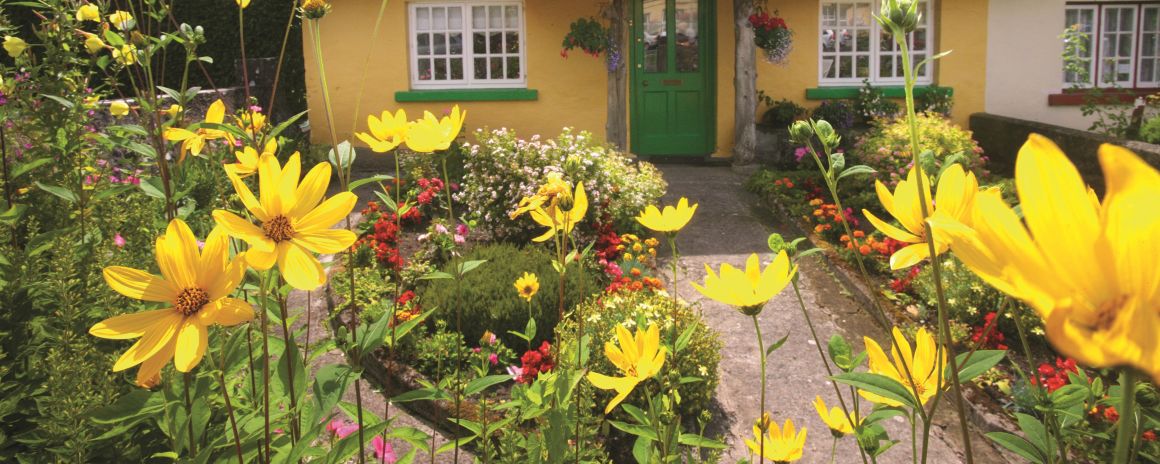
Adare is a small town in Co. Limerick, known for its quaint and colourful thatched cottages. Adare is considered to be one of Ireland's most beautiful towns so stop and take in the view. Don't forget your camera today - the perfect chance to capture the essence of old Ireland.
Explore Adare Village along the Wild Atlantic Way.

Take a journey through this once troubled city. See the murals of the Loyalist Shankill Road & Nationalist Falls Road. The Troubles took their toll on the economic life of Belfast, but the past ten years of peace have returned much prosperity while the genuine friendliness of the city never left.
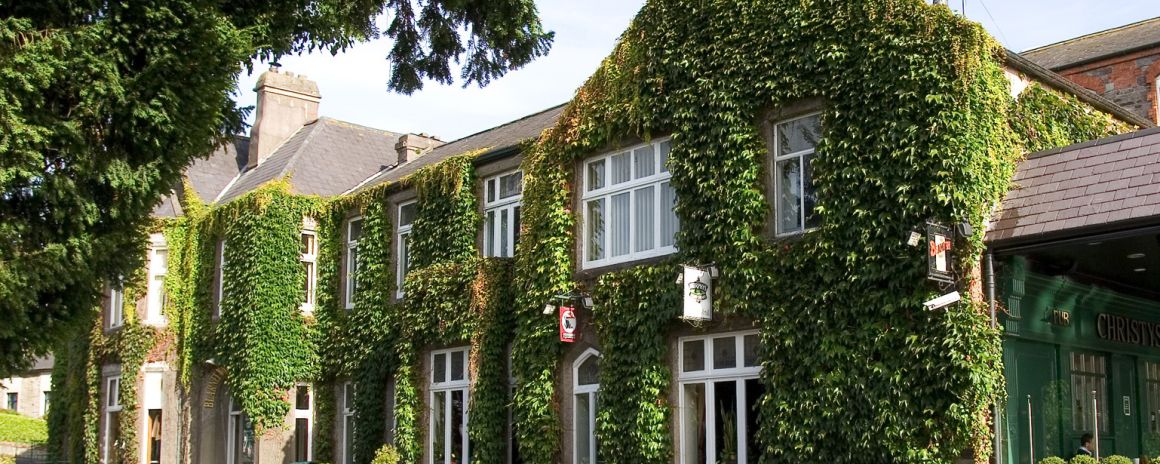
Originally built in 1823, Blarney Woollen Mills was mainly used for the spinning and weaving of wool. After it closed in 1973, it reopened in 1975 — as an Irish heritage shop.
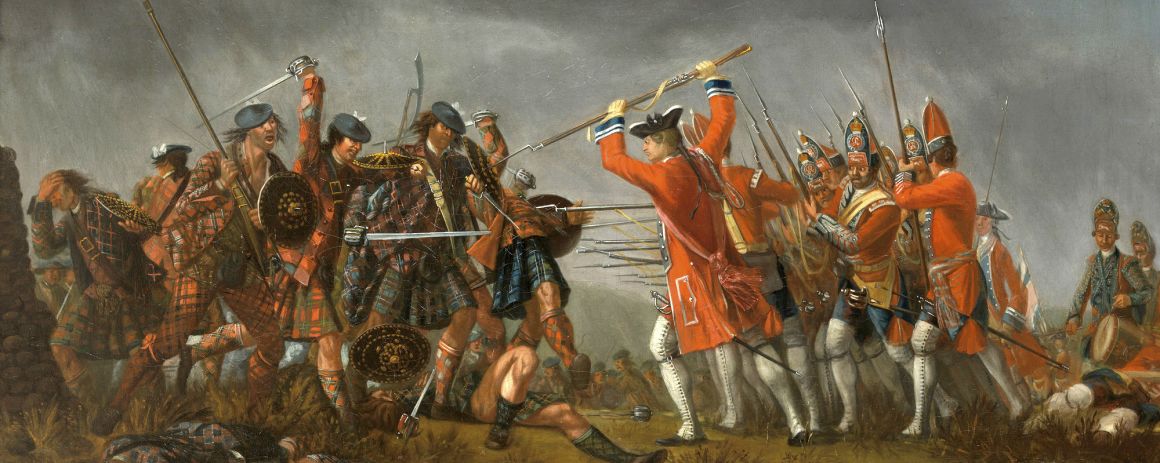
The Culloden Battlefield Visitor Centre commemorates the last pitched battle fought on British soil, in April 1746. Learn more about the Jacobite intent to overthrow the House of Hanover and return the House of Stuart to the British throne.
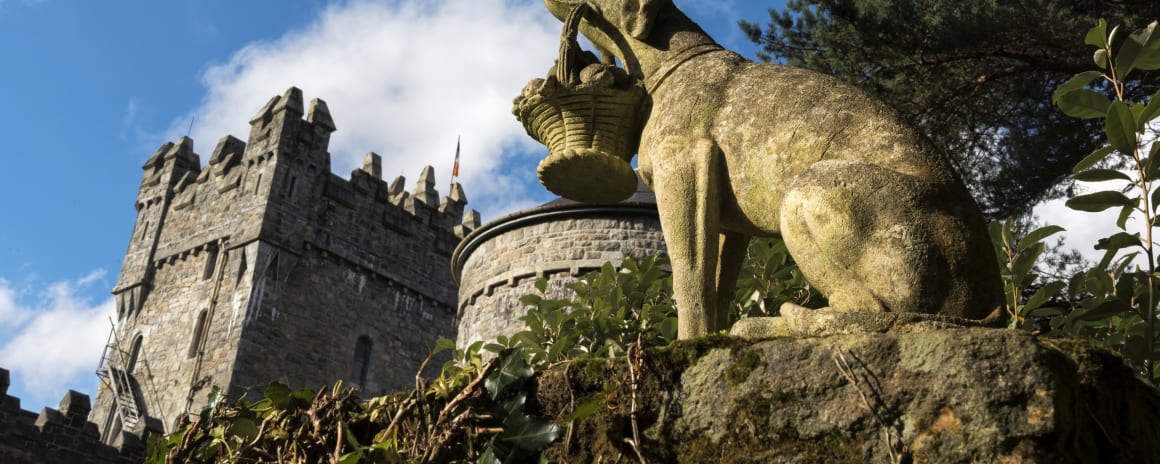
Located within Glenveagh National Park, Glenveagh Castle was built by Captain John George Adair between 1870 and 1873. Having made his fortune through land speculation in America, Adair return to Ireland and began large amounts of land in County Donegal. The castle was built in the Scottish Baronial style and is surrounded by a garden and commands stunning views of the nearby mountains, lakes, woodlands and valleys.
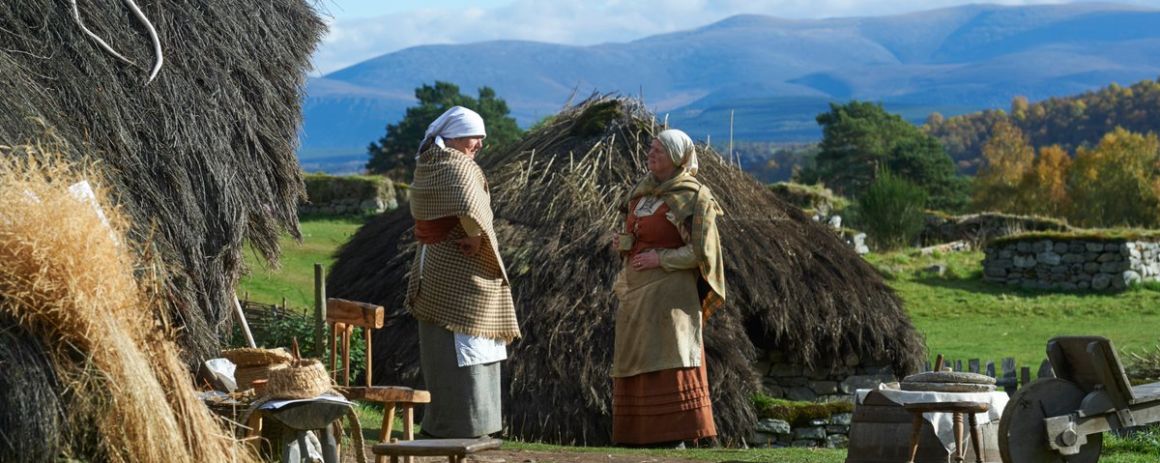
About Highland Folk Museum is a museum and open-air attraction located in the Scottish Highlands. It is designed to showcase the domestic and working lives of the early highland people.
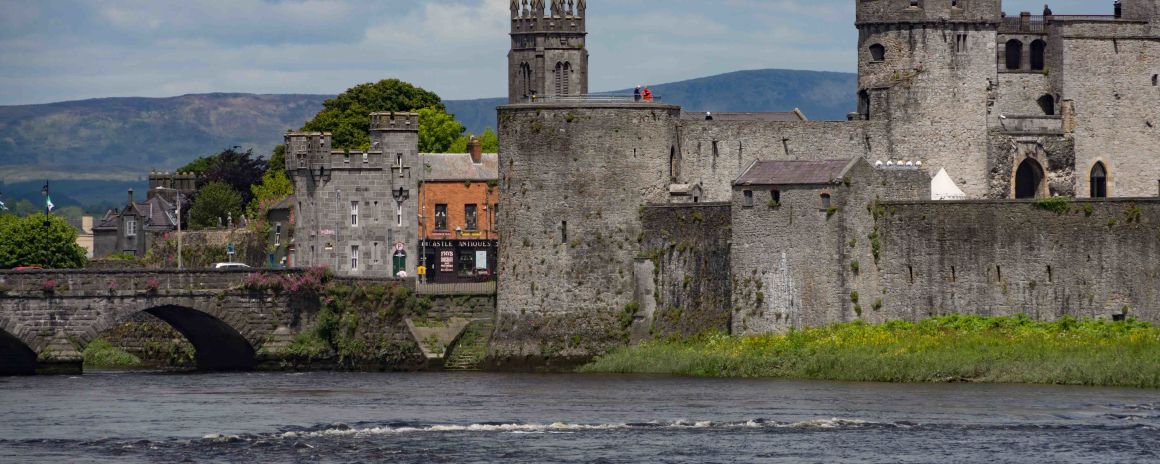
Located alongside the River Shannon in County Limerick, on King's Island. Dating back to 922, to a time when Vikings were the inhabitants of the island (Thormodr Helgason, the Viking sea-king, built the first settlement here. The castle itself was built in 1200, under the instruction of King John of England.

Located alongside the River Shannon in County Limerick, on King's Island. Dating back to 922, to a time when Vikings were the inhabitants of the island (Thormodr Helgason, the Viking sea-king, built the first settlement here. The castle itself was built in 1200, under the instruction of King John of England.
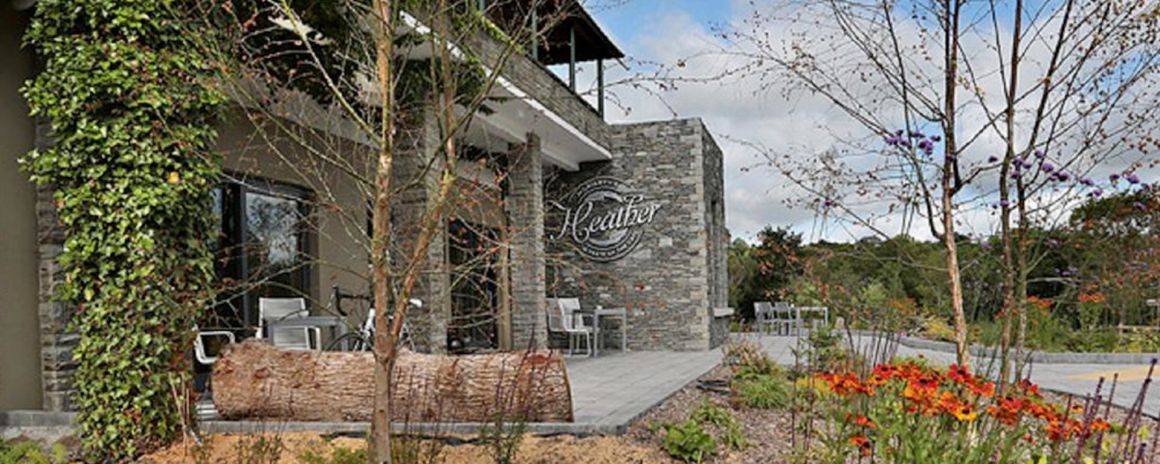
Located close to the Killarney National Park, Moriarty's is an Authentic Irish Gift Store and Restaurant. Hand crafted Irish jewellery, Waterford Crystal and classic and modern tweed fashions and furnishings are all on offer at the gift store. The restaurant is an 85 seater offering stunning views of the surrounding landscape.
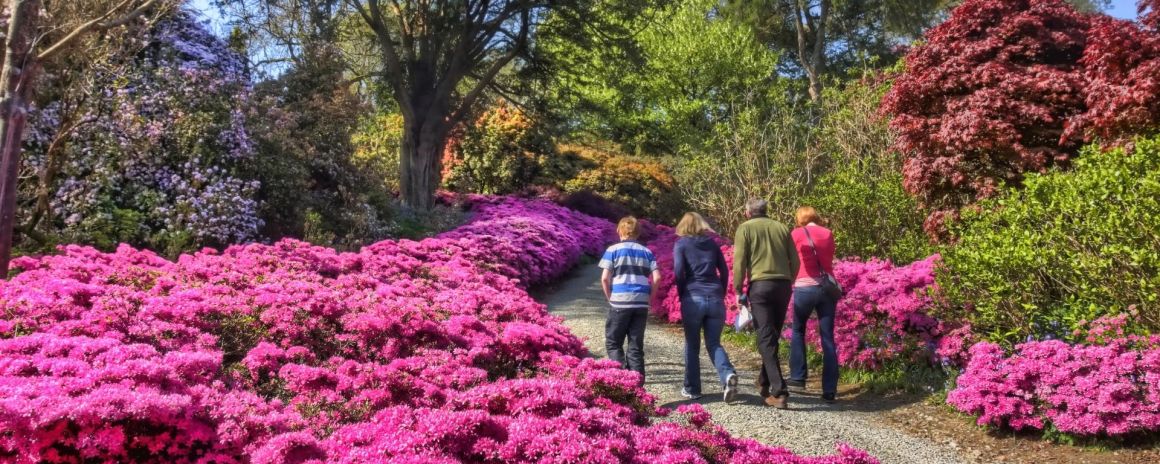
Mount Congreve Gardens. Located in Kilmeaden, County Waterford, Mount Congreve Gardens is an 18th century Georgian estate and mansion. It was designed by the same architect that created both of Waterford's cathedrals, John Roberts.
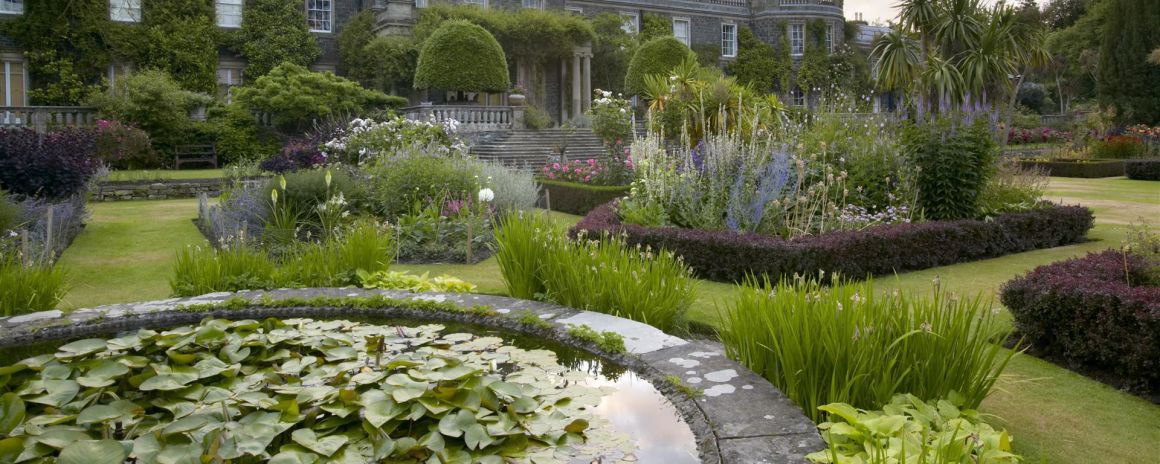
Recently recognised as being one of the top 10 gardens in the world, Mount Stewart is a rich tapestry of planting plant life and stunning walking trails. The house dates back to the 19th century, and was the Irish seat of the Vane-Tempest-Stewart family.
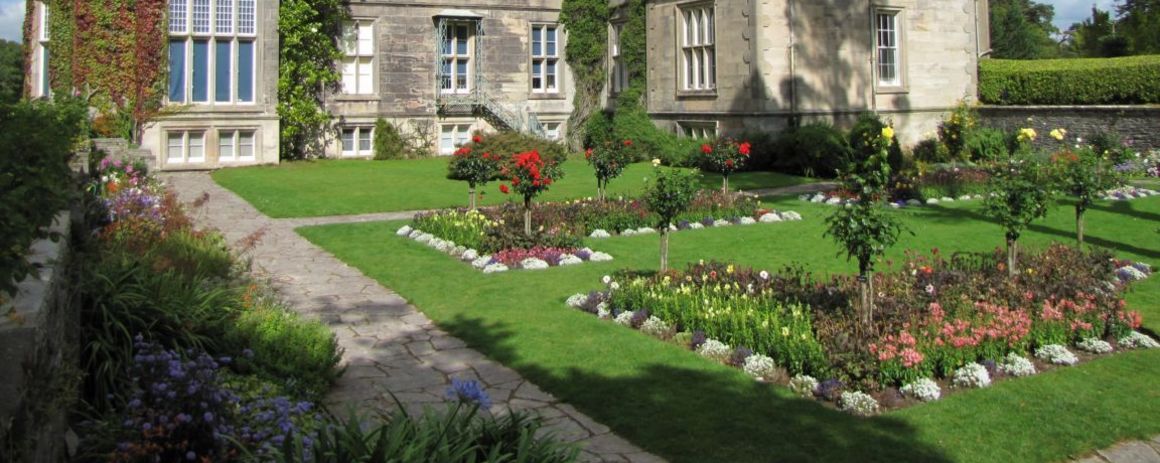
Located on the grounds of the expansive and idyllic Killarney National Park. Muckross House, and its 11,000-acre grounds, was donated to the Irish state in 1932.
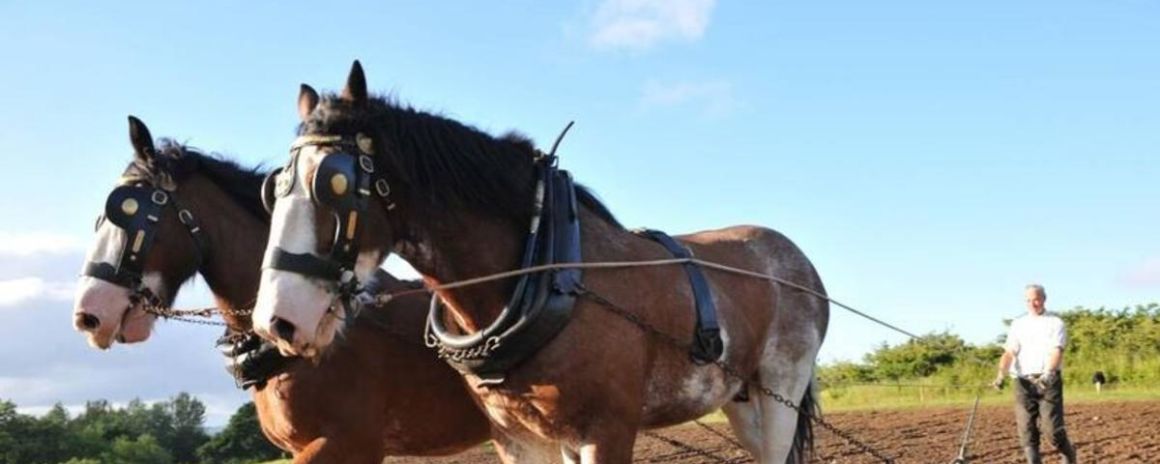
Located on the grounds of the picturesque Muckross House and its impeccable gardens. Take a step back in time and see the Irish farming lifestyle of the 1930s and '40s. A time when the horse was responsible for much of the labour and the weather was the be all and end all in terms of production.
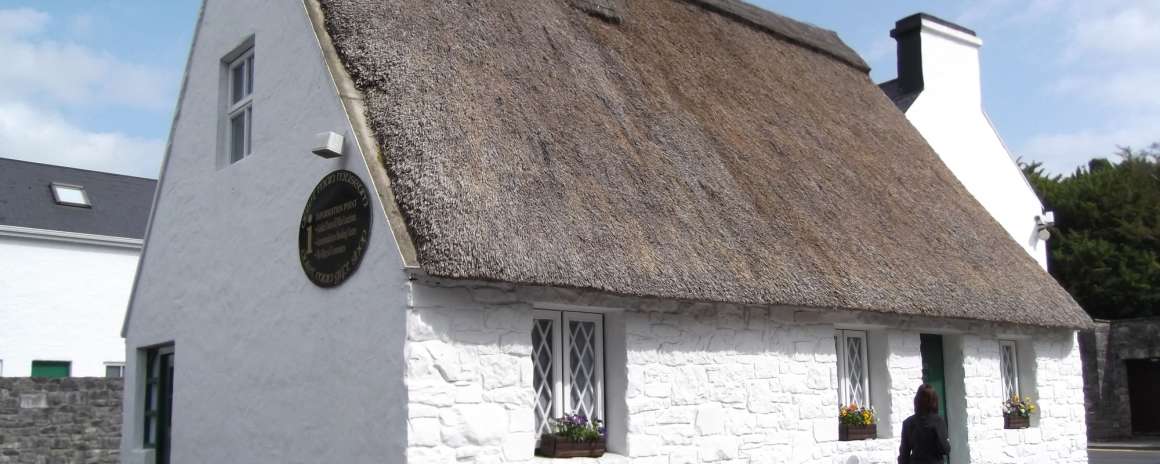
The Quiet Man Museum. A reproduction of the quaint thatched cottage from the John Wayne starring, John Ford directed movie of the same name. all costumes, artefacts and furnishings have been recreated in precise detail, to reflect the setting of the 1952 classic. Located in the picturesque village of Cong, County Mayo.